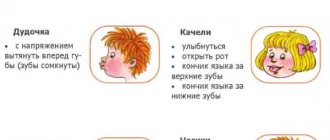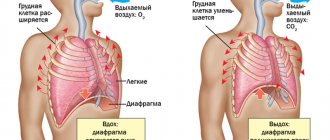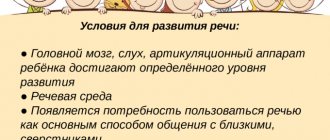Words with the syllable SHA
Game "Divide"
Look at the pictures. Name them. Divide the pictures into two groups.
Game "On the contrary"
Read the words backwards. What word did you get? Match the resulting word with the picture.
Game "Count the syllables"
Read the word, determine how many syllables it has. Don't forget about the correct pronunciation of the sound [Ш].
Game "Insert the letter"
Read the words by inserting the missing letter Ш.
Game "Fourth wheel"
Name the objects, clearly pronouncing the sound [Ш]. Find the extra picture. Hint: extra picture without sound [Ш].
Fourth wheel
Game "Labyrinth"
Collect pictures in the maze that have the sound [Ш] in their names. Name what you take.
Game "Airplane"
Fly the plane and collect pictures that have the sound [Ш] in their names. Name what you take.
Lesson 1
Spatial orientation Cross orientation. - Place your right hand on your left shoulder. Place your left hand on your right knee. Touch your left ear with your right hand. With your left hand touch your right cheek. “We go up the mountain, we go down the mountain.” Pronunciation of syllables in combination with movements of the index finger. Exercise for developing a long exhalation “Let's warm up our hands.” Take a deep breath through your nose. Round your lips and exhale forcefully through your mouth. A warm air stream should be felt. Repeat 3-4 times. Lip exercise “Surprise”. Round your lips and pull them forward. Make the sound [o]. Exercises for the tongue “The tongue looks for a crack in the fence.” Insert a wide tongue into the gap between the teeth. "Spatula". Smile, open your mouth slightly, place the wide front edge of your tongue on your lower lip. Hold in this position for a count of up to 10. Coordination of breathing, articulation and phonation Game tasks “The boat rocks on the waves.” Drawing wavy lines in a box of millet cereals. Development of phonemic perception Isolating the sound [w] from a number of sounds that are distant in terms of acoustic and articulatory characteristics. Sounds: [v], [w], [l], [sh], [p], [b], [f], [sh], [m], [n], [sh]. Syllables: la, sha, fu, wu, po, ko, by, gy. The words hat, lump, fur coat, jar, shirt, raspberry.
Teenager
In children over 14 years old, sound automation begins with independent composing of syllables, reading them, highlighting the problematic sound. First you need to pronounce combinations where Sh is in an open position: ash, ush, ish, ish, yush, esh. Then switch to syllables with a closed position: sha, shu, shi, she, she. From syllables they move on to reading words, first starting with the desired letter, then at the end and in the middle of the word:
- Jackal, noise, hut, rustle, whisper, chocolate, hornet, bumblebee, joke, chic, neck, tire, washer, silk, scow, sharpie, champignon, curtains, blinkers, husk, screen.
- Baby, brooch, mascara, breach, quiet, good, lie (w), rye (w), luggage (w), garage (w).
- Noodles, jerboa, hawthorn, pot, arshin, fur, crumb, basket, matryoshka, grandfather, powder, drying, brooch, nightmare, cannon, frog.
Next, the words are used to form phrases. You can invite the teenager to combine the words themselves, or read ready-made examples:
- Wide pot.
- Big cup.
- Good powder.
- The best brooch.
- Big frog.
- Jerboa jumps.
With a teenager, you can perform exercises that involve selecting words that are opposite in meaning or synonyms, and composing phrases:
- I'm walking along the highway.
- The big frog went into the forest.
- Wash a good pot with powder.
- He has a big scarf.
- He is embroidering a scarf.
- I wear a hat with earflaps and a fur coat.
You can use tongue twisters, proverbs, and sayings. It is important not just to pronounce, but also to work on intonation: speak loudly, clearly, quietly, slowly, drawn out, quickly, accelerate, highlight the desired sound.
| Proverbs | Even a needle and thread interferes with sewing for an inept seamstress. Murder will out. You'll walk away from a drop, but you'll end up in the rain. |
| Tongue Twisters | The mouse whispers to the little mouse: -You keep making noise, making noise! The little mouse whispers to the mouse: -I'll be quieter. The cuckoo sews a hood for the cuckoo, The cuckoo will put on its hood. How funny he is in the hood! |
| Sayings | You are welcome to our hut. At the feast the beaters are dancing. The sooner you start, the sooner you get there. |
Working with texts for teenagers is an integral part. Using them, you can check how automated the sound in speech is. The work is carried out using several methods:
- reading text highlighting the desired sound;
- retelling the text;
- search in the text for words with the letter Ш, reading;
- composing a text with a variety of words starting with the desired letter.
An important part is retelling and composing, as it allows you to test natural speaking. When a child reads a text, sees a problematic letter in advance and concentrates his attention on it, he tries to read it correctly. When retelling or composing a text, speech is not controlled by the teenager, especially if the words are pronounced without interruption or pauses.
Automation of the sound [Ш] in words with a confluence of consonants in the middle of words
Game "One-many"
Make pairs of pictures: one object - many objects. Say it like this: “mouse-mice.” Pronounce the sound [Ш] clearly.
Game "4 extra"
Read or repeat all the words after an adult. Find the extra word. Justify your answer.
Game “Name it kindly”
Call it affectionately, for example: “hut-hut.” Pronounce the sound [Ш] clearly and correctly.
Game "Find the word"
Read the words that are written on the right. Pronounce the sound [Ш] clearly. Find these words in the table. They can be horizontal and vertical. Hold down the left mouse button and drag over the word. Read these words again.
Recommendations
Consolidating the correct pronunciation of sounds in speech is called automation. The process should not be taken lightly. It is important to move to this stage only after regular articulation gymnastics, when the baby begins to make progress in correct articulation and positioning. Automation of the sound Ш occurs in words, sentences, and text. You always need to start with the easy ones and gradually move on to the complex ones: from syllable to word, from sentence to text.
Automation of the sound Ш in words implies compliance with the rules:
- It is impossible, if there are problems with several consonant letters, to automate all at once those that a person confuses in speech: Ш, С, Ш, Ж, З, etc.;
- you need to move on to fixing the sound after a person learns to pronounce it autonomously several times in a row;
- in the process of automation, the child needs to use visual material to make it interesting to learn (cards, coloring books, cubes, etc.);
- Before doing exercises and reading, always warm up the articulatory muscles with the help of gymnastics;
- when automating, adhere to the rule - act from simple to complex;
- You need to practice every day, without burdening the child or adult (preschooler - 15 minutes, schoolchild - 20-25 minutes, adult - 30-40).
Automation of sound is a complex but interesting process. The result and the duration of the correction will depend on the reason for the incorrect pronunciation. You need to approach each individual case individually. If parents cannot correct their pronunciation over a long period of time, they need the help of a speech therapist. Perhaps the cause of the problem is the peculiarity of the structure of the speech apparatus, then, along with speech therapy classes, the help of doctors will be needed.
Rules for successful automation
When automating sound, the correct placement of the speech apparatus plays an important role. Sometimes children forget after classes with a speech therapist how the tongue and lips work when pronouncing a problem sound. Before each lesson, you need to pronounce the correct position. The work should be carried out before exercises with syllables.
Where to start
A child and an adult must understand where the tongue is, how the teeth and lips are located. This is not easy to understand when there is no professional assistant nearby. When pronouncing the sound Ш, the lips move forward, the teeth should be partially closed. The tongue is extended forward, the tip rises to the sky without touching it. The sides of the organ should be in contact with the molars. The vocal cords are not involved in pronunciation, there is no voice.
When automating at home, you need to talk to your child about correct articulation before completing tasks:
- stretch your lips forward, imagine that it is a pipe or tube;
- stretch your tongue forward towards your teeth, lift the tip up, feel the palate;
- lower your tongue a little so that it does not touch the palate, form a gap between them;
- imagine that the tongue is a cup from which the cat will lap milk, you need to prevent it from spilling, make it deep (you need to show that the edges of the organ should touch the molars);
- try to make a sound without using your voice, as if a snake is hissing.
Parents begin work on sound automation, making sure that the child has correct articulation and can repeat it several times without gross violations.
Articulation warm-up
For successful automation, each lesson should begin with an articulatory warm-up. It allows you to warm up the muscles of the speech apparatus. It is necessary for children and adults to carry it out. To prepare the articulatory apparatus, classical exercises are used aimed at honing the pronunciation of the sound Ш: shovel, painter, pie.
Shovel
The exercise helps overcome muscle tone by relaxing the organs of articulation. You need to stick your tongue forward, it may be tense at first. Afterwards, children are asked to smile, but without straining their lips. The end of the tongue rests on the lower lip, the sides easily touching the corners of the mouth. You need to achieve relaxation of the organ; you should hold in this position for several seconds. In subsequent times, you can increase the relaxation time to train the muscles. Exercise “Shovel” is a basic exercise for correcting hissing sounds.
Painter
Children are asked to imagine themselves as a painter who needs to paint the roof of their mouth. To do this, you should open your mouth slightly in a slight smile, without straining your lips. The jaw should not move. The exercise is complex and involves “painting” the upper part of the mouth with the tongue from the pharynx to the teeth and back. Important: the child must keep his tongue in constant tension, control it so that it does not come out. The task allows the baby to understand how and where to point the tongue when making the sound Ш.
Pie
The exercise is often used in speech therapy, is complex, and trains the lateral muscles of the tongue. Don't be upset if your child doesn't complete the task the first time. Not every adult will be able to repeat the movements of a speech therapist. In children with regular practice, success comes on the 5-7th day.
You need to relax your tongue, as in the “Shovel” exercise, so that it lies calmly on your lower lip. Then ask the baby, without straining the organ, to try to bend its side parts inward, forming a funnel. As a result, the baby should see a funny “pie” made of tongue in the mirror. You need to hold this position for 5-10 seconds.
It is necessary to train not only the organs of the articulatory apparatus before automation, but also correct breathing.
Speech therapists recommend using soap bubbles, tubes, whistles, paper snowflakes or cotton balls that need to be blown away to develop breathing in children. You can play with your preschooler on his birthday, blow out the candles on the cake or pie that mom prepared for the doll. An adult can inflate balloons.









